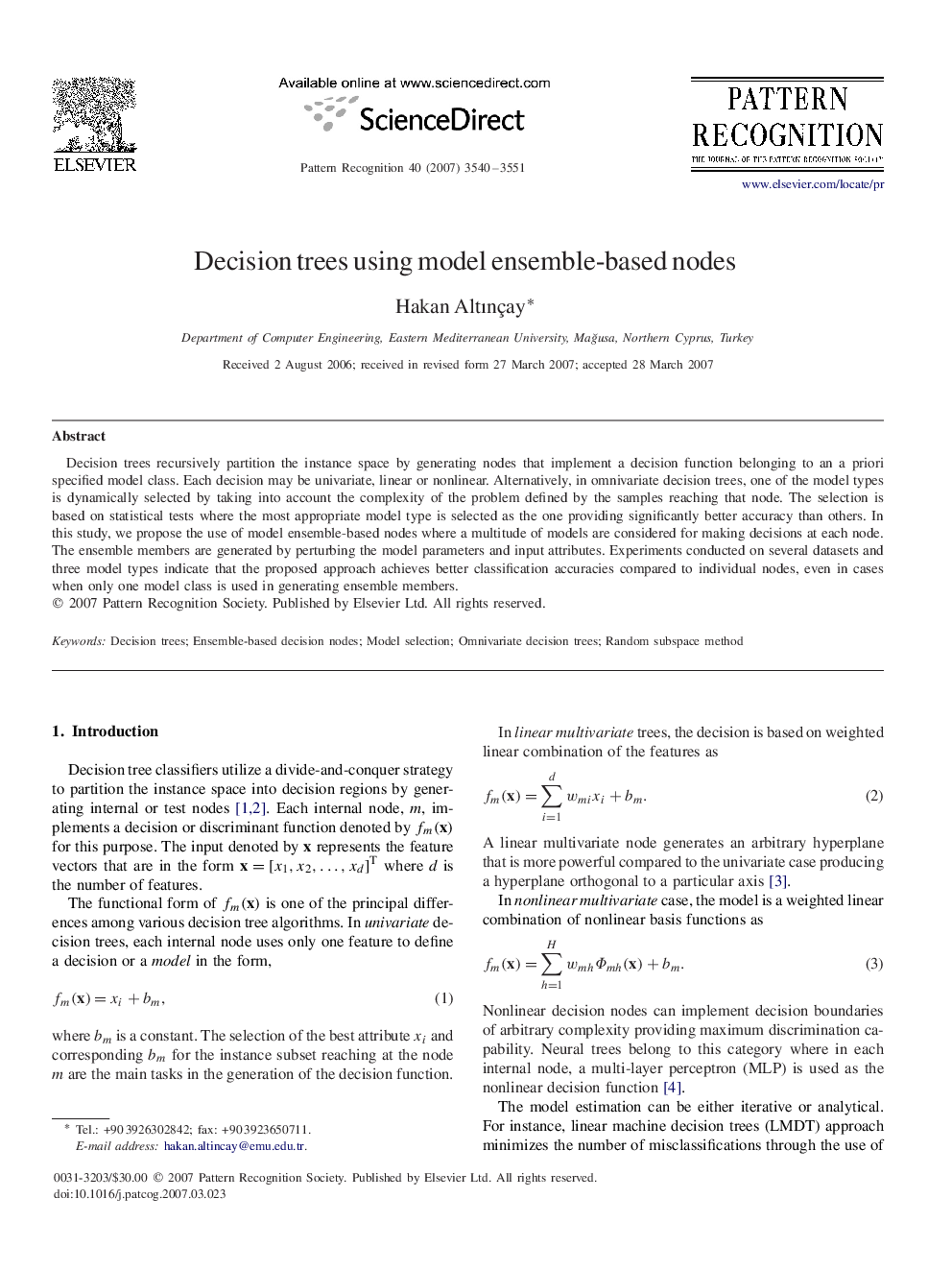| Article ID | Journal | Published Year | Pages | File Type |
|---|---|---|---|---|
| 532833 | Pattern Recognition | 2007 | 12 Pages |
Decision trees recursively partition the instance space by generating nodes that implement a decision function belonging to an a priori specified model class. Each decision may be univariate, linear or nonlinear. Alternatively, in omnivariate decision trees, one of the model types is dynamically selected by taking into account the complexity of the problem defined by the samples reaching that node. The selection is based on statistical tests where the most appropriate model type is selected as the one providing significantly better accuracy than others. In this study, we propose the use of model ensemble-based nodes where a multitude of models are considered for making decisions at each node. The ensemble members are generated by perturbing the model parameters and input attributes. Experiments conducted on several datasets and three model types indicate that the proposed approach achieves better classification accuracies compared to individual nodes, even in cases when only one model class is used in generating ensemble members.
